Suzanne Sbarge is the Executive Director and Founder of 516 ARTS, a nonprofit arts and education organization in Downtown Albuquerque. They’ve been putting on innovative shows in their museum style gallery, as well as collaboratively throughout the city, since 2006. Some of the amazing street art that popped up in Downtown Albuquerque in late 2010 (some of which is still there) is an example of 516’s integration into the fabric of the community. They produce innovative educational tours and classes and are known for their collaborative leadership in art display and production. We’re delighted to talk to Suzanne and thankful for her time and candidness.
New Mexico Mercury: You've studied and produced art in several places across the U.S. as well as in Europe, could you tell us a little about your art education, your life as an artist and what brought you to New Mexico?
Suzanne Sbarge: I grew up in Connecticut and went to Barnard College in New York where I studied Art History and Studio Art. I moved to New Mexico 24 years ago to go to graduate school at UNM in Art Therapy. They had a terrific program back then, which focused on a post-Jungian, archetypal approach. We studied mythology and dreams, which nourished me as an artist; but my career went in a different direction when discovered I had a knack for arts administration and community organizing.

As a visual artist, I started as a photographer and came to painting and mixed media techniques through artist/teacher Holly Roberts, who helped me to access a place that's not governed by my conscious mind. For me, artmaking and arts administration use very different parts of my brain and I have trouble doing them simultaneously. I have found short artist residencies and workshops to be a good way to launch new bodies of work and concentrate exclusively on artmaking.
NMM: What was the impetus for starting 516 and some of the obstacles you’ve had to overcome?
SS: I founded 516 ARTS in 2006 at the request of the McCune Foundation, which owns the building, to create a "flagship" for the arts in the downtown revitalization process. Fundraising remains the greatest challenge and obstacle. I think many people assume 516 is well-funded because of our beautiful building, expansive programming and quality publications; but the reality is we have to be unrelenting in pursuing every funding avenue we can, and each year our income is full of unknowns. Financial instability is an ongoing struggle for most small nonprofits. I have found that surviving it requires non-stop fundraising, networking, adaptability and faith in the value of what we do.
NMM: How would you define Albuquerque's art scene and what you believe 516 adds to it?
SS: Albuquerque's art scene is rich in artists, cultural diversity, community and vitality, but it's financially challenged in terms of the art market and philanthropy for the arts and culture. I think Albuquerque is still emerging as an arts center, but we've made some leaps in the last few years. 516 ARTS’ work in leading large-scale collaborative projects has shown the benefits of working together to make a larger impact than we could do individually. Last year, 516 ARTS produced ISEA2012 Albuquerque: Machine Wilderness, involving over 90 partner organizations around the region and bringing people from 37 countries to Albuquerque for the conference and over 106,000 people to the multi-site exhibition. 516 ARTS’ mix of local, national and international artists helps to connect Albuquerque in the larger art world and be part of global dialogues about current issues addressed through art.
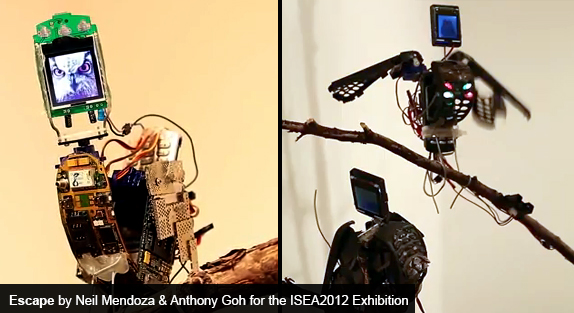
NMM: How important have your education programs been to the organizational mission as well as for funding?
SS: Education is at the core of our mission, so it's part of everything we do. For young people we provide educational tours with curriculum materials for teachers accompanying each exhibition, hands-on art activities, internships and apprenticeship opportunities to participate in murals, such as the recent Wells Park Rail Corridor Mural Project, and other public art projects. For adults we offer public forums, talks, workshops, screenings and a variety of ways to create face-to-face interaction with artists, curators and community members. Although funders so often state youth education as a top priority, the majority of our funding comes from the broader work we do in the community in terms of presenting educational exhibitions, showcasing culturally diverse artists and leading collaborations.
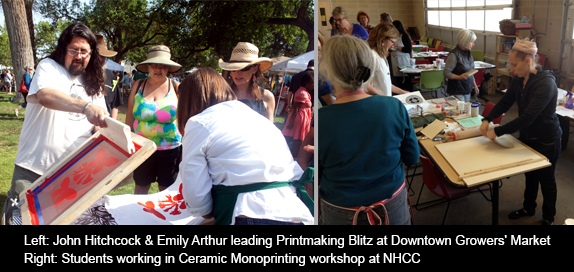
NMM: For me, one of the most memorable projects 516 put on was, "Street Text: Art from the Coasts" & "The Populist Phenomenon" where you brought together artists from all over the country and used the city of Albuquerque as a collaborative exhibit space. This seems to typify 516's integrative approach of bringing art to the community. Was this populist approach to art exhibition a response to anything you've experienced in the art world, or was it more of a modeling on innovative efforts you found in other places?
SS: That was one of my favorite projects too, as it was really successful in bringing together a large audience from many different walks of life. The overall collaboration was called STREET ARTS: A Celebration of Hip Hop Culture and Free Expression. Young street artists mixed with venerated icons in the genre; differing perspectives from the east and west coasts were brought together and compared; and people who have never been to a museum mixed with academics and the contemporary art world, everyone learned in the process, and the end result was an energizing celebration.
I've learned that in the realm of collaboration, the natural pattern is for projects to just keep growing until time runs out. So, sometimes I try to imagine what would happen if we keep going with one project, allowing it to keep mushrooming and following where it leads us. Many of our past collaborations could have kept going much further and become their own organizations. But the nature of 516 ARTS is to keep venturing into new subjects, reaching different segments of the population with that ever-changing variety.
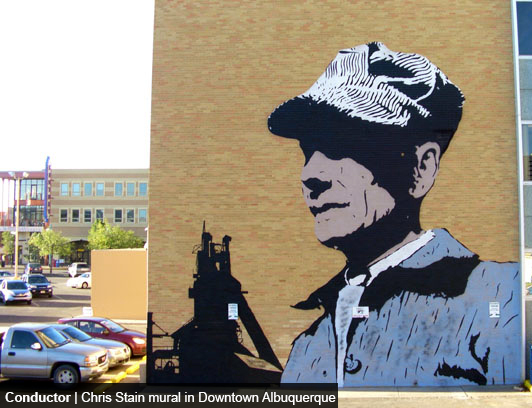
For the STREET ARTS project, the lead curatorial ideas came from Andrew Connors who curated Street Text: Art from the Coasts, and Francesca Searer who curated The Populist Phenomenon. The way it evolved was organic and driven by members of the community, the curators and the artists. It was a unique creative adventure that came together at a particular time and place.
I do often look to other cities and organizations for ideas and models, but 516 ARTS ultimately finds its own way with every project. Our staff (Rhiannon Mercer, Teresa Buscemi and Claude Smith) are all artists too, so I like to think we each bring our individual creative qualities to the work that we do as organizers and curators. I have come to believe that community organizing is a form of art, and it's just one of the mediums we are working in as artists.
NMM: With a small staff, what are the logistics like to pull off such complex and collaborative events?
SS: Honestly, it's crazy how much we do with a staff of four. Although we are always intensely busy, the flow comes in waves, building towards the launch of new projects to a heightened pitch when we run on adrenaline, and then calming down in between things so we can recover our strength. I feel extremely lucky to work with such a committed group of staff. They all started as unpaid interns before they became full-time staff members. I want to recognize their exceptional work ethic, intelligence and creativity. We also couldn't do what we do without the support and involvement of a terrific Board of Directors, led by Arturo Sandoval, who believe in what we do and help make it all happen.
NMM: 516's current exhibition is "Art at the Border: 21st Century Responses" which involves a variety of pieces in different formats including a reading by Native and Latina Poets. How did this project come together?
SS: Art at the Border: 21st Century Responses (on view through January 4) is guest curated by Kate Bonansinga in conjunction with the forthcoming release of her book Curating at the Edge: Artists Respond to the U.S./Mexico Border. The featured artists are from both Mexico and across the U.S. The installation is beautiful, with some large work and space for it to breath. Kate says, "Subjects include immigration struggles, drug-related violence, craft as identity and the fluidity of cultural exchange that defies physical walls." I invited Kate to curate this show at 516 ARTS because it's a very relevant theme for our place and time.
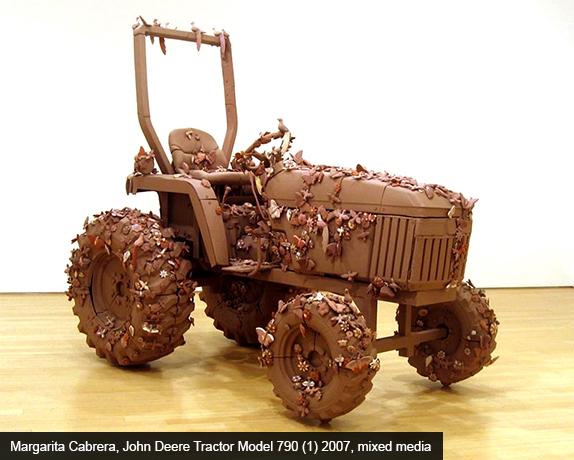
The 516 WORDS poetry reading on Thursday November 14, 7pm is the result of inviting poet Tanaya Winder to organize a poetry event on the theme of the border. The 516 WORDS series, started by Lisa Gill, features readings and performances with poets on the themes of our exhibitions. Tanaya is the Editor-in-Chief of the literary journal As/Us: A Space for Women of the World. She has assembled a group of five accomplished Indigenous and Latina poets responding to mental, physical and geographical borders, with particular focus on the U.S./Mexico border.

NMM: What's on the horizon for 516 ARTS?
SS: Coming right up on Friday, November 1, 6-8pm, we are excited to host a Book Release Party and benefit for 516 ARTS celebrating two new books by photography icons of New Mexico, David Scheinbaum and Janet Russek. David’s new book is HIP HOP: Portraits of an Urban Hymn, and Janet Russek’s is The Tenuous Stem, They are generously offering selected original prints for sale at this event, with a portion of proceeds benefitting 516 ARTS. They are also signing a limited edition of 11” x 17” posters of their work, produced just for this event, 100% of the proceeds from which will benefit 516 ARTS. The celebration will include a live DJ from the scene of David Scheinbaum’s work, and refreshments from Tractor Brewing.
Opening February 1, 2014, our spring exhibition is Heart of the City, a collaborative project and exhibition that examine intersections of art, urban planning, cultural and economical development, education and community dialogue. 516 ARTS is bringing together over 10 organizations representing colleges, high schools, artist collectives, educational organizations and small businesses. Many of the projects include an experience for students working with a lead artist, culminating in installations in the exhibition at 516 ARTS and a few exciting public art projects around Downtown.
One of the highlights is a new "Gateway to Downtown Mural" created by guest artist Aaron Noble with youth apprentices from Warehouse 508, which will be painted in advance this November on the Warehouse 508 building. At the end of October, also gearing up in advance of Heart of the City, artist Larry Bob Phillips and his students from CNM will paint a new mural on the east-facing side of the Century Downtown Theatre on 1st Street between Central and Gold. The exhibition will include sculpture, painting, photography, interactive work, installation, video, new media and artworks focusing on social engagement.
Later in 2014, 516 ARTS will present Digital Latin America, an outgrowth of the Latin American Forum that took place during ISEA2012 last fall. It will explore the North/South axis of cultural development and exchange between South America, Central America and the Southwest United States. The project includes a multi-site, international art exhibition based at 516 ARTS with off-site projects at The UNM Art Museum, The Albuquerque Museum of Art & History and the National Hispanic Cultural Center; a weekend symposium and a Downtown Block Party. Artists confirmed to date come from Mexico, Colombia, Brazil, Argentina, Peru and Chile, as well as New Mexico and across the county.
Admission and events at 516 ARTS are free and open to the public. Become a member or renew your membership to help make 516 ARTS possible. For more information about our programs, visit www.516arts.org.
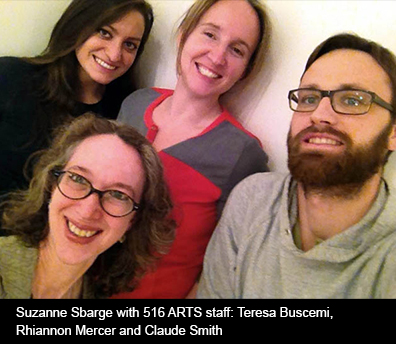


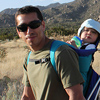

Responses to “Mercury Q&A with Suzanne Sbarge of 516 ARTS”